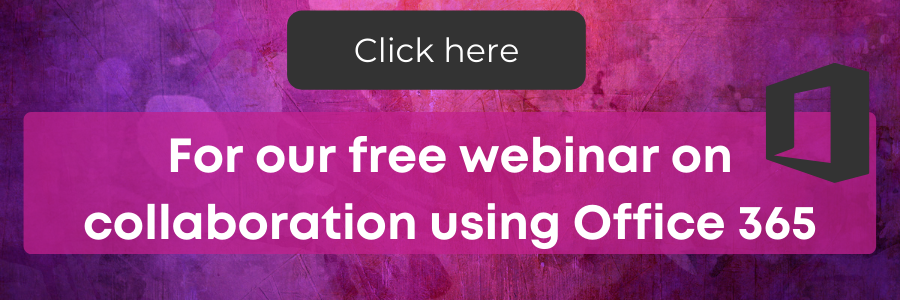Over the past couple of years, more and more businesses have had to confront the realities of a remote workforce.
For those without cloud, it's been a big challenge - how do you stay connected and keep everything up to date without having access to real-time data, the ability to jump on a call, add others to that call, share a document, and work together as effectively as you would have in the office?
Many adopted cloud quickly, through necessity, and may not be exploring the collaboration opportunities fully yet. Others struggled through with unconnected systems, sharing documents via email and scheduling Zoom calls.

Manage access and collaborate in real time
One of the benefits of working in the cloud is that everyone has access to the documents they need, when they need them. No one is stuck trying to access the "G Drive" that's sitting on a server in the office. No one gets locked out of a document they need to work on. No one is working on the wrong version of a document because three other people have made changes since they downloaded it last.
Having all of your work files in one place means everyone can access what they need. Multiple people can be working on the same document - so you don't have to wait for Sales to pop their reports into the template before Operations can add their updates.
One of the core elements of making sure this works is having the correct access provisions in place. You want to set up the right permissions, so that everyone has access to the folders and files they need, and not the ones they don't (or shouldn't have visibility of).
That's not only important for your internal security, but it's also important for things like GDPR. People should only ever have access to data they need.
Connect and call as needed
One of the big winners of the pandemic was Zoom - how many had heard of it beforehand? I don't know if there's anyone left in the UK who hasn't attended at least one Zoom event in the last year.
And it's a great platform. But when it comes to collaboration, tools like Teams have more to offer.
- Asynchronous communication - send messages to individuals, group chats, and whole teams
- Create meetings and see when your colleagues are available
- Start a quick video call with one person and easily invite another colleague to join you (when you inevitably realise you need their input)
- Share documents and work on them together, within the app
- Instantly record and share meetings - no waiting for the recording to process or download
- Use one of the many integrations and plugins to improve collaboration or wellbeing.
Teams is an integral part of Microsoft 365, and for many people it's the absolute hub of where they get things done.
We use a fraction of the internal email we used to, because it's so easy to use Teams for quick queries, to share documents (and, more importantly, be able to find them again even after a while has passed), and catch up.
Multi-device, maximum flexibility
Effective collaboration relies on using the tools and devices that suit each person in each context. Collaboration in the cloud is no different.
Microsoft 365 can be used on any device - laptop, desktop, mobile, or tablet. And each one has its own benefits and features. If you like to take handwritten notes, OneNote on iPad, using an Apple Pencil, is perfect - and unlike a paper notebook, you can share this one with the rest of your team, colour-code it, file it, and search it.
Join meetings from any device and easily add your other devices (so you can use your tablet as a whiteboard) or switch from one device to another - if you need to start a meeting on your phone while your laptop boots up, you can seamlessly switch to the other device when you're ready. Much more efficient collaboration than having to leave and rejoin the meeting.
Monitor your collaboration
Microsoft's "employee experience platform" Viva provides insights into your collaborators, time spent collaborating, and how much time you have available to focus. If your calendar is too full, it'll prompt you to schedule some focus time so you can get through your to do list.
You're able to see how your collaboration pans out - including data like how many emails, chats, and calls you received, how much time you spent in meetings, and even what percentage of meetings overlapped with other meetings.
All of this is an important consideration when it comes to collaboration. Having access to one another all the time, through tools like Microsoft 365, is powerful but we should also be mindful of the impact it can have - not only on wellbeing but also people's ability to do their work.




